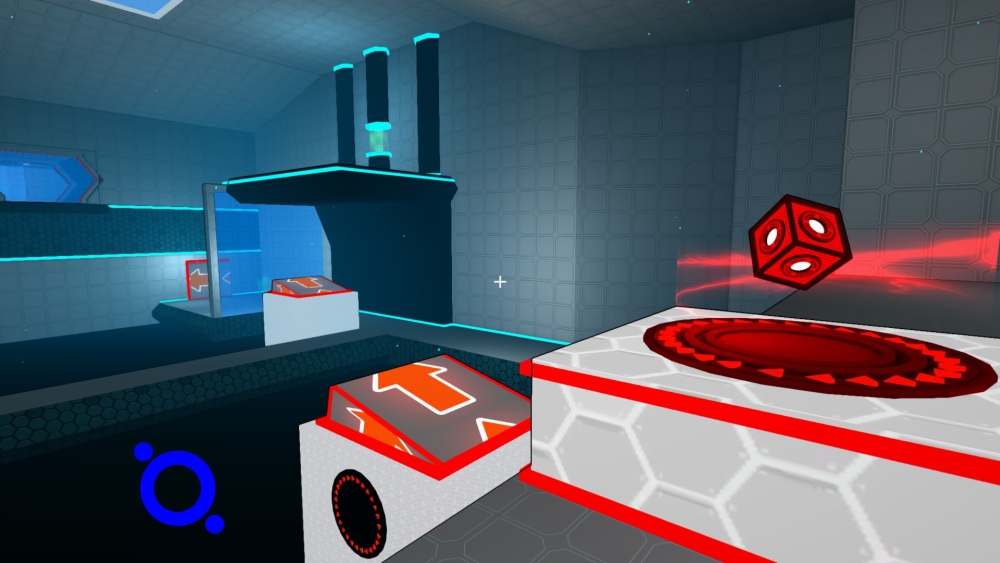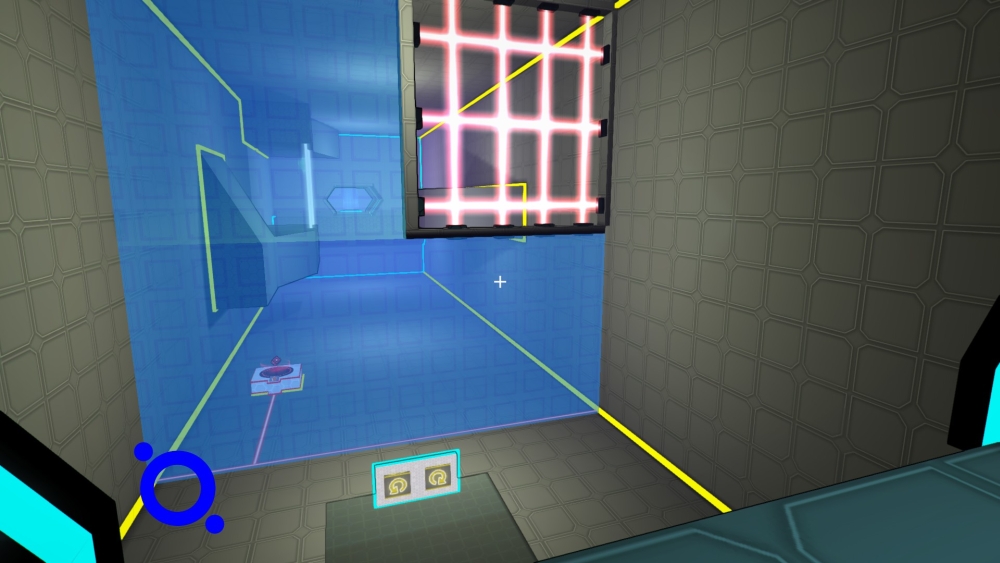Polarity is a simple little game. Following in the nearly impossible not to follow footsteps of Portal, the 3D first person puzzle game drops you in a series of rooms (we won't call them test chambers) and challenges you to make a path to the exit. There's no disembodied computer voice nagging you at every turn, but there are some satisfying puzzles to complete, and a small but workable co-op campaign to boot.
Here's the story: you're a hacker. Your client wants you to break into a highly secure virtual vault system. Glowing green data fragments are hidden in the VVS level nodes, so your job is to snag them and high tail it out of there before you get caught. No hacker has ever beat this security system, but if you do and you do it well, you'll get a sweet bonus check. Sounds good to me, let's be bad guys.

Hacking in Polarity is a lot less code monkeying and a lot more puzzle platforming. The game is about 60/40 puzzle solving to reflex action, which is a good mix that works in the player's favor. Things never get too cerebral, and the hopping around doesn't get too hoppy. Security systems in the VVS level nodes come in the form of colored barriers, usually red and blue. Since you're a hacker, you can toggle your color between the two, allowing you to interact with the system in whatever manner most pleases you. Um, not that manner, just puzzle solving manners.
While you're trundling along in a level node, you might come across a red wall, for example. Want to pass through that wall? Turn yourself red. Next you might encounter a blue platform suspended over a pit. Want to stand on it? Stay red. Opposites repel each other (because of polarity!). Sometimes you even have to switch colors in mid-air so you can stand/pass through many different obstacles in a row. There are also jump pads, buttons and switches to interact with, though your personal color doesn't matter so much in these scenarios.

Speaking of buttons, Polarity is packed with a lot of them. Floating colored cubes are tied to various movable implements in the game, requiring you to fetch the appropriate source to power the platform. This is usually what puzzles are built around, since you have to retrieve the block then get it back to the power source in one piece. Sometimes you get to just chuck that thing across the level, which is exactly as effective as your own aim and shoot skills can be.
Collecting data fragments gives you access to more stages, allowing you to move across the map one node at a time. There are only about two dozen stages to complete, which includes bonus non-story stages, but it's enough for a casual romp. As you progress the levels get larger and more complex, often requiring trial and error methods, blind runs and just plain luck. There are even jump pads and gravity-shifting stages that twist things around in the most disorienting of ways.
